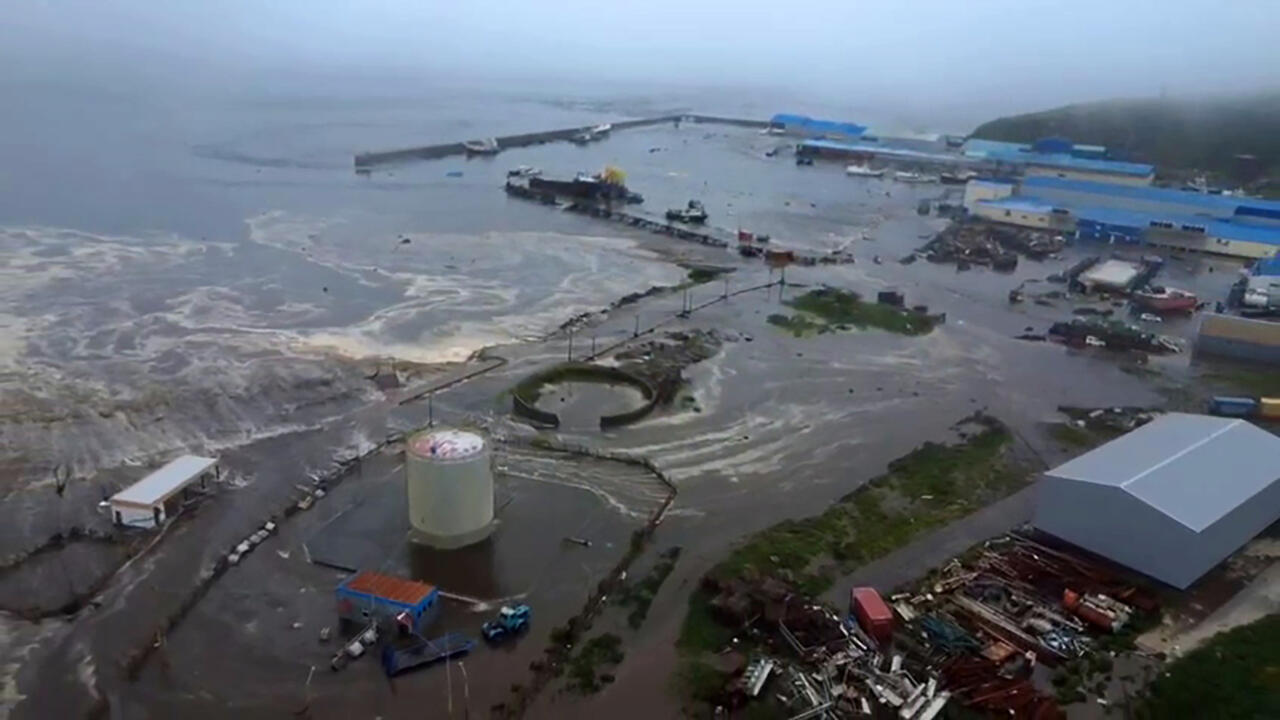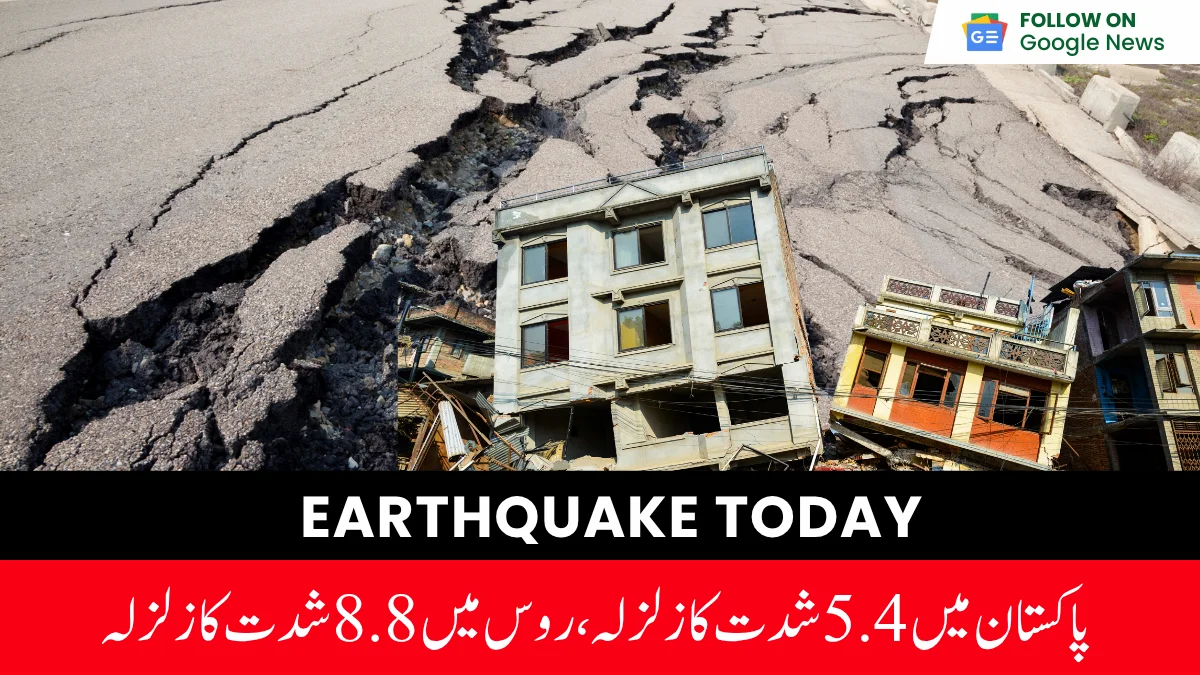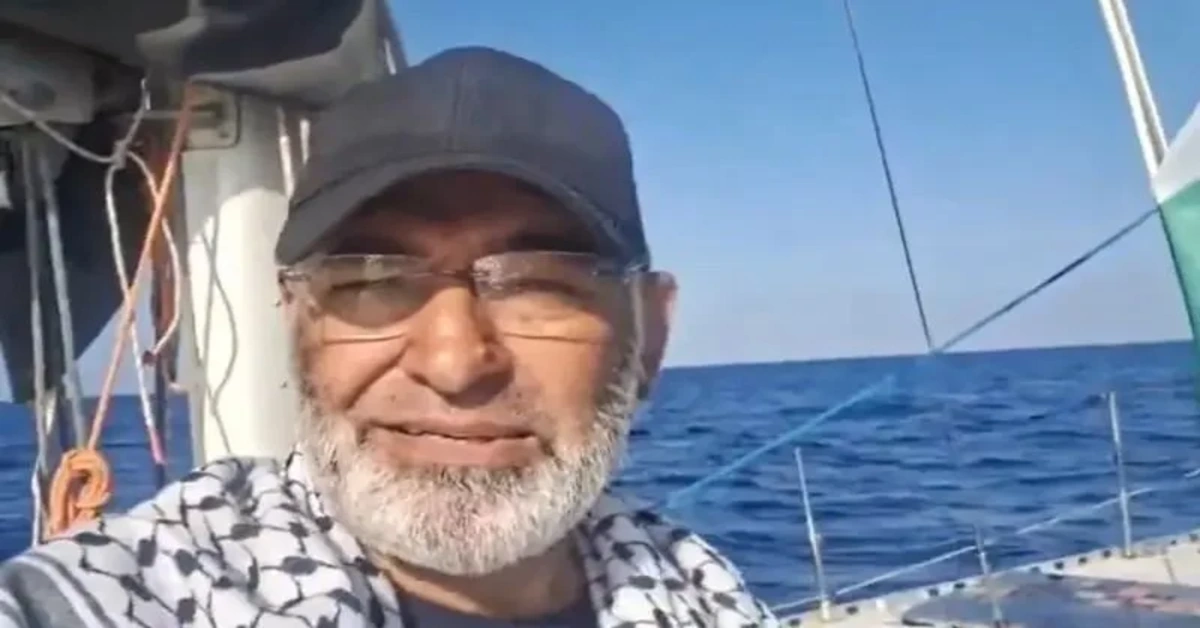
Tsunami Waves Hit Pacific Coasts After Massive Russia Earthquake
- Zain Ul Abideen
- Reading Time 6

A powerful 8.8-magnitude earthquake struck off Russia’s Kamchatka Peninsula on July 30, 2025, sending tsunami waves across the Pacific Ocean. The quake, one of the strongest ever recorded, hit 136 km east of Petropavlovsk-Kamchatsky, a coastal city in Russia’s far east. It triggered widespread tsunami warnings and evacuations in countries like Japan, Hawaii, and the U.S. West Coast. The earthquake also caused Russia’s Klyuchevskoy volcano to erupt, adding to the region’s challenges.
In Japan, tsunami warnings were issued for the eastern coast, from Hokkaido to Okinawa. Waves up to 1.3 meters (4.3 feet) hit Kuji Port in Iwate Prefecture, prompting nearly two million people to evacuate. The Japan Meteorological Agency later downgraded all warnings to advisories, meaning the risk of major flooding had passed but strong currents could still pose dangers. No damage or injuries were reported, and nuclear power plants, including Fukushima Daiichi, showed no abnormalities. The memory of the 2011 tsunami, which caused a nuclear meltdown, kept authorities and residents on high alert.
Hawaii faced significant tsunami alerts as waves up to 5.7 feet hit Kahului, Maui, and 4.9 feet in Hilo. Sarah Heavenly Sikes, a Maui resident, described the anxiety as she and her coworkers closed a scuba diving shop after receiving alerts. Sirens blared across the islands, urging people to move to higher ground. By late Tuesday, the Pacific Tsunami Warning Center downgraded Hawaii’s alert to an advisory, allowing residents to return home but urging caution due to possible strong currents. No major damage was reported, though minor flooding occurred on the Big Island.
The U.S. West Coast, from California to Alaska, was placed under a tsunami advisory. Northern California, particularly from Cape Mendocino to the Oregon border, saw a warning upgrade as waves up to 3.6 feet hit Crescent City. The National Weather Service warned of dangerous currents and advised people to avoid beaches, harbors, and marinas until the advisory was lifted. California Governor Gavin Newsom said the state’s Office of Emergency Services was coordinating with local officials to ensure safety.
Other Pacific regions were also affected. French Polynesia braced for waves up to 4 meters (13 feet) in the Marquesas Islands, while Chile issued a red alert for coastal areas, mobilizing resources and suspending school classes. Colombia ordered evacuations in Choco and Narino, and Peru prepared for waves up to 7.58 feet. The Philippines and Taiwan issued alerts but later canceled them as no significant waves were detected.
In Russia, the quake caused minor damage, including to a kindergarten in Petropavlovsk-Kamchatsky. Tsunami waves up to 4 meters flooded Severo-Kurilsk, sweeping away boats and storage containers. An expedition group on Shumshu Island lost their camp to the waves but reported no injuries. Russian authorities lifted tsunami warnings, and the Kremlin praised the alert systems for preventing casualties.
The International Atomic Energy Agency (IAEA) confirmed no safety issues at nuclear power plants along the Pacific coast, providing relief after the region’s history of earthquake-related nuclear incidents. The quake, tied for the sixth-strongest ever recorded, was caused by tectonic plates shifting along fault lines in the Pacific Ring of Fire, a region known for frequent seismic activity.
Region | Tsunami Wave Height | Alert Status |
Japan | Up to 1.3m (4.3ft) | Downgraded to advisory |
Hawaii | Up to 5.7ft (1.7m) | Downgraded to advisory |
U.S. West Coast | Up to 3.6ft (1.1m) | Warning (Northern CA), Advisory (elsewhere) |
Russia | Up to 4m (13ft) | Lifted |
French Polynesia | Up to 4m (13ft) expected | Alert in effect |
The earthquake and tsunami threat disrupted transportation across the Pacific. Japan saw train and ferry cancellations, while Hawaii’s airports paused flights. Residents in affected areas are urged to stay vigilant, as aftershocks up to 7.5 magnitude and additional waves remain possible.
A massive 8.8-magnitude earthquake off Russia’s Kamchatka Peninsula on July 30, 2025, triggered tsunami waves, prompting alerts in Japan, Hawaii, the U.S. West Coast, and other Pacific regions.
Waves reached up to 5.7 feet in Kahului, Maui, and 4.9 feet in Hilo. The state was under a tsunami warning, later downgraded to an advisory.
No abnormalities were reported at nuclear power plants, including Fukushima Daiichi in Japan, according to the International Atomic Energy Agency.
No abnormalities were reported at nuclear power plants, including Fukushima Daiichi in Japan, according to the International Atomic Energy Agency.
Experts warn of possible aftershocks up to 7.5 magnitude and additional waves, so coastal residents should stay cautious even after alerts are downgraded.
Send Us A Message

Punjab Schools Reopen: New Schedule for August 2025 After Reduced Summer Vacation

Earthquake Today: 5.4 Magnitude Quake Jolts Pakistan, 8.8 Hits Russia

Tsunami Waves Hit Pacific Coasts After Massive Russia Earthquake

Mardan Board Result 2025: Punjab Private Schools Shine, Government Schools Improve














